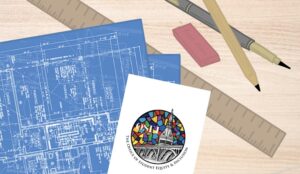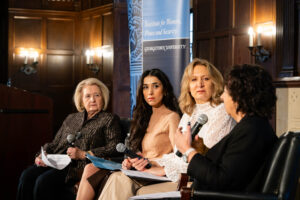The Georgetown Institute for Women, Peace and Security (GIWPS) hosted an event on Dec. 5 supporting the launch of the new edition of its Women, Peace and Security Index. The index evaluates and ranks countries based on their inclusion, justice, and security for women, and was first released on Oct. 22 at the United Nations headquarters in New York.
Though recent decades have seen important advances for women, they continue to face significant challenges globally. One out of eight women experience intimate partner violence annually, 113 countries do not mandate equal pay for women, and women account for less than a quarter of members of parliament worldwide, according to GIWPS.
Melanne Verveer (SLL ’66, GRD ’69), former US ambassador-at-large for global women’s issues and current executive director of GIWPS, shared her hope that this index would inform future initiatives for women globally. “We see this as an important tool for you as advocates and as policymakers,” she said, addressing the room of researchers, government officials, NGO workers, and students gathered at the Mortara Center for International Studies.
Verveer highlighted the list’s utility due to the wide range of factors considered. “The uniqueness of this index is that it doesn’t only look at the dimension of inclusion,” she said. “It also includes justice, because what is the quality of your inclusions if you’re discriminated against? And it includes security, because what is the policy of your inclusion if you’re not even safe going to school, but your country is ranked as having a greater number of girls attending school?”
This 2019 version edition of index, which builds on the index’s first release in 2017, evaluates 167 countries, encompassing over 98% of the world’s population. To judge women’s inclusion, justice, and security, it tracks various indicators. These include the presence of laws that discriminate against women, rates of intimate partner violence, women’s representation in national parliaments, and overall rates of death from organized violence.
The new index generally found improvements. “Our welcome headline is that the world seems to be moving in the right direction,” the report reads, noting that 59 countries improved by at least 5 percent from 2017 to 2019, whereas only one country (Yemen) experienced a 5 percent decline.
According to the list, Norway, Switzerland, Finland, and Denmark performed best, while the United States ranked nineteenth. Pakistan, Syria, Afghanistan, and Yemen (in descending order) were the lowest ranked.
The full report on the index and an executive summary are available online from GIWPS.
Joel Hellman, dean of the SFS, explained how this report builds on the school’s legacy of combining women’s issues and a focus on international security. “Among the first coterie of women ambassadors came from this school,” he said. “Faculty members like Jean Kirkpatrick and Madeline Albright and others shaped our thinking about security and peace. And individuals like Melanne [Verveer] and many others played such a critical role in bringing women’s issues to the forefront of diplomacy.”
Hellman, who formerly served as chief institutional economist at the World Bank, also shared his hope that this index would contribute to positive change for women globally. “In my own experience engaging in the multilateral world, I hope everyone recognizes the extraordinary value that these kind of indices have in changing ideas into action,” he said.
Jeni Klugman, managing director at GIWPS, explained one of the ways country rankings like this can influence policy. “Countries can shift quite significantly in the ranking, not because the value of their absolute score changes, but because countries around them do much better or worse,” she said. “The idea is to instill some competitive spirit.”
The report was developed by GIWPS in collaboration with the Peace Research Institute Oslo and with funding from Norway’s Ministry of Foreign Affairs. GIWPS also partnered with National Geographic, combining design work from the publication with data from the index to create content for both the index report and for National Geographic’s November 2019 issue, titled “Women: A Century of Change”.
Looking forward, Verveer highlighted the role that current students could play in advancing research on issues of women’s security and inclusion, given the relative newness of this field. “Whether it’s quantitative research or qualitative research, I think there’s a whole range of possibilities, and I think the perspective of youth and young people on these issues are particularly valuable,” she said. “There’s lots to do.”





